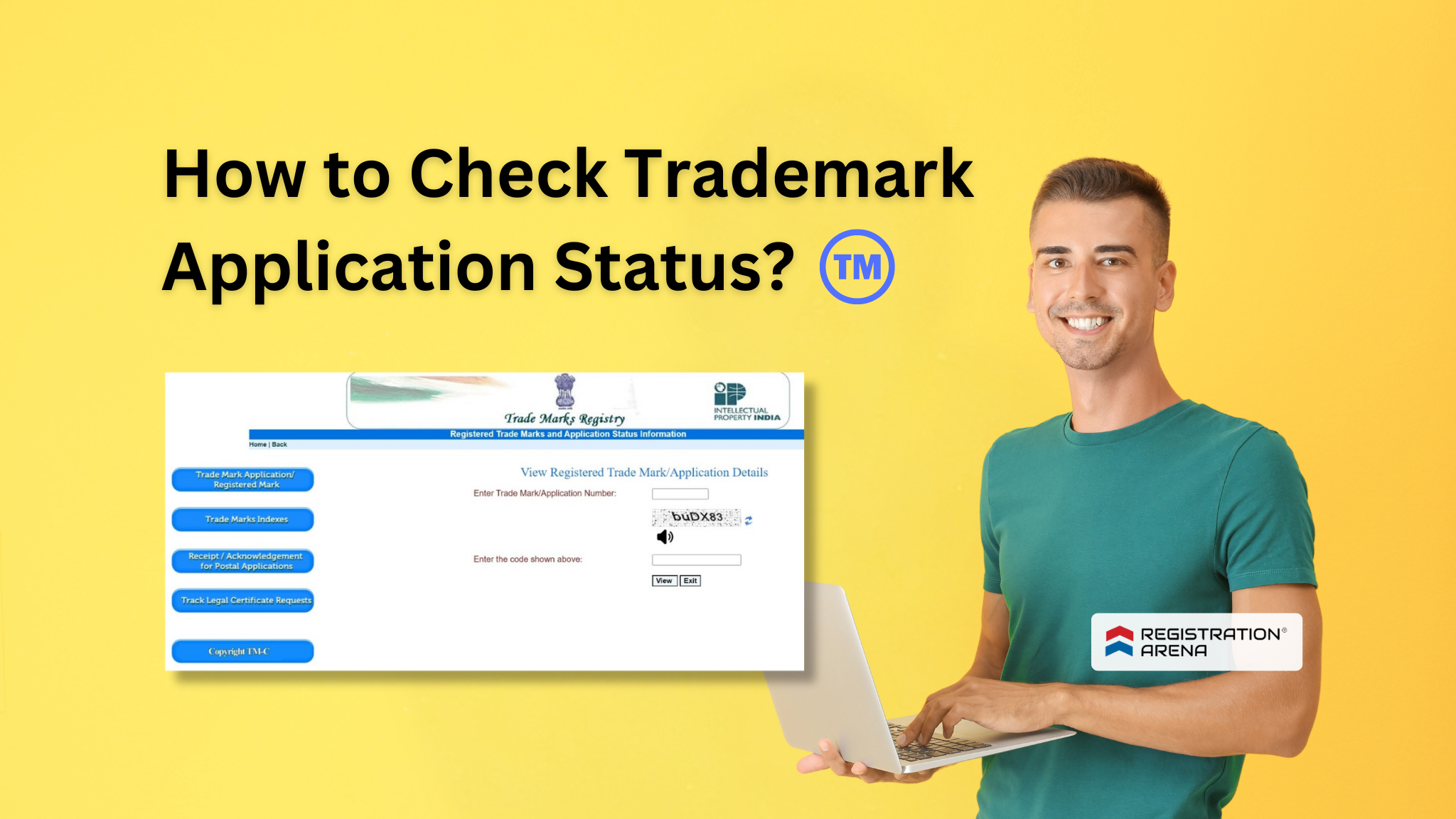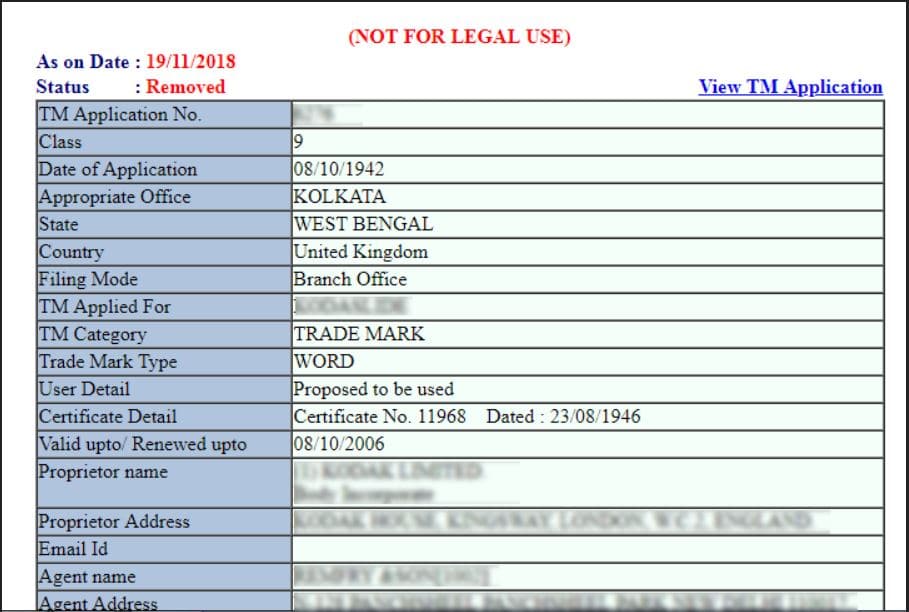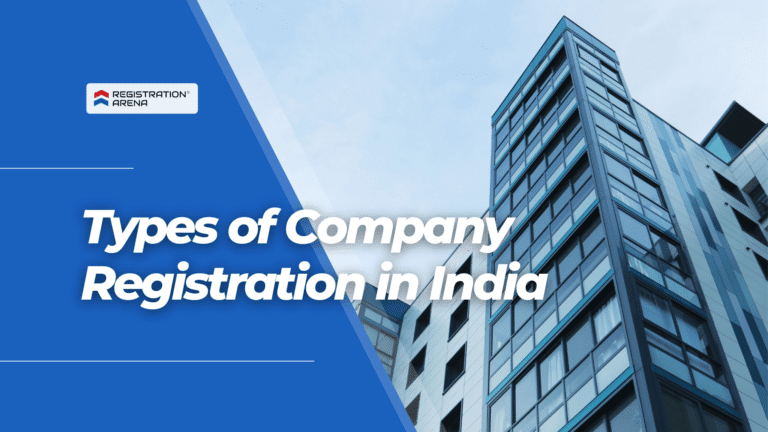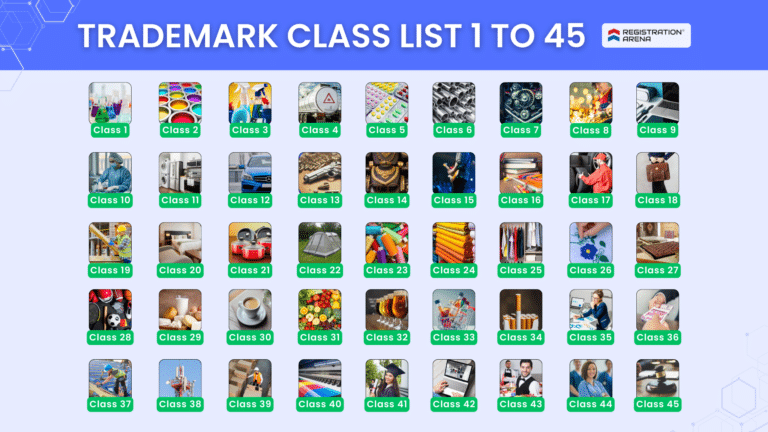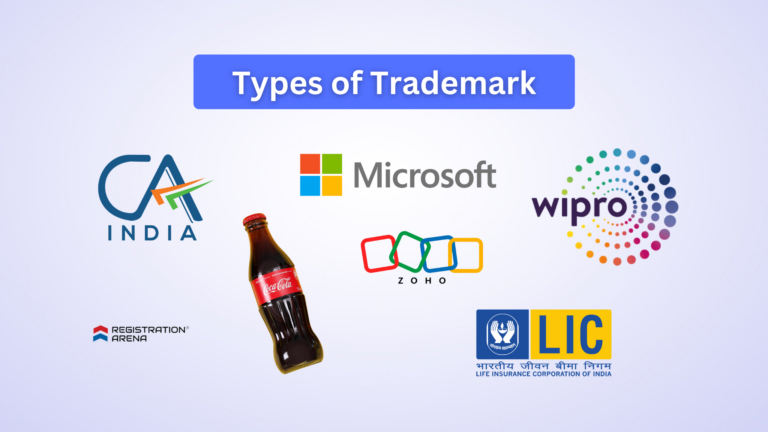Trademark Application Status
Trademark registration is the process of officially recording a trademark with a Trade Mark Registrar Office to protect it from unauthorized use. The process involves conducting a trademark search, gathering necessary information such as a clear representation of the trademark and details of the applicant, completing and submitting the application online or at a local Trademarks Registrar office, reply to examination notice from Registrar, attending hearing with the registrar, replying to Opposition Notice etc.
Once trademark application is made, it goes through several stages during the registration process, each represented by a specific status. There are various types of trademark application status which shall be discussed below in detail . In short, The status is marked as “Sent to Vienna Codification” when a trademark application includes figurative elements, such as logos, designs, or devices categorizing the visual aspects of the trademark. After Vienna Codification, the status is marked as “ Formalities Pass/Fail Check” when the Trade Marks Office reviews it to ensure that the application is complete in all respects or not.
The status is marked “Accepted” when the application meets the criteria for registration and is approved by the registrar for publication in the Trademark Journal. Conversely, if the application fails to meet the requirements of the Trademarks Act 1999, it will be labeled as “Objected.” Once the application successfully navigates all necessary stages and complies with the Trademarks Act, its status changes to “Registered.”
Keeping track of a trademark’s status is essential for applicants, as it allows them to stay informed about the registration process. This knowledge can help resolve potential issues and explore alternative options. Ultimately, it not only conserves resources for the company but also protects them from the risks of infringement and the associated legal proceedings.
Need for Trademark Application Status:
1. Formal Process:
The Indian government has a structured procedure for trademark applications.The registered trademarks are recorded in the Trademark Registrar of India.
2.Time Frame:
The approval for trademark registration typically takes 6 to 12 months so it is essential to track progress of the trademark application.
3. Online Access
The Trademark Registrar updates application status online as part of the digitization effort.
4. Required Actions:
Applicants must respond to objections and attend hearings if called by the registrar.
5. Avoiding Issues:
Staying updated on application status helps prevent penalties and rejections.
6. Proactive Management:
Timely information enables applicants to manage their trademark registration effectively.
How to Check Trademark Application Status?
1. Visit the Official Website of IP India:
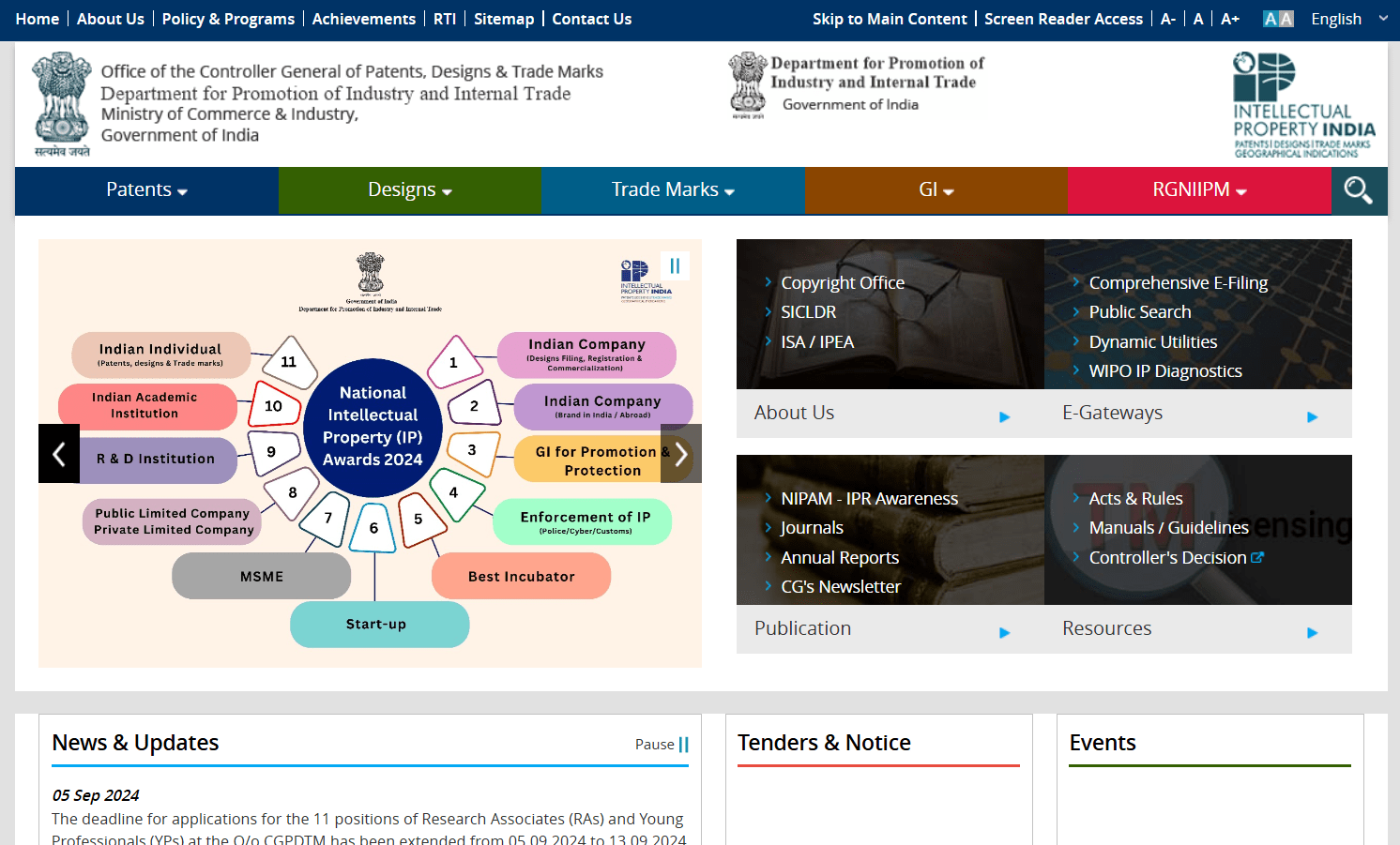
2. Click on the 3rd Tab “ Trademarks” then click on “ Related Links” > “ Trademark Status”
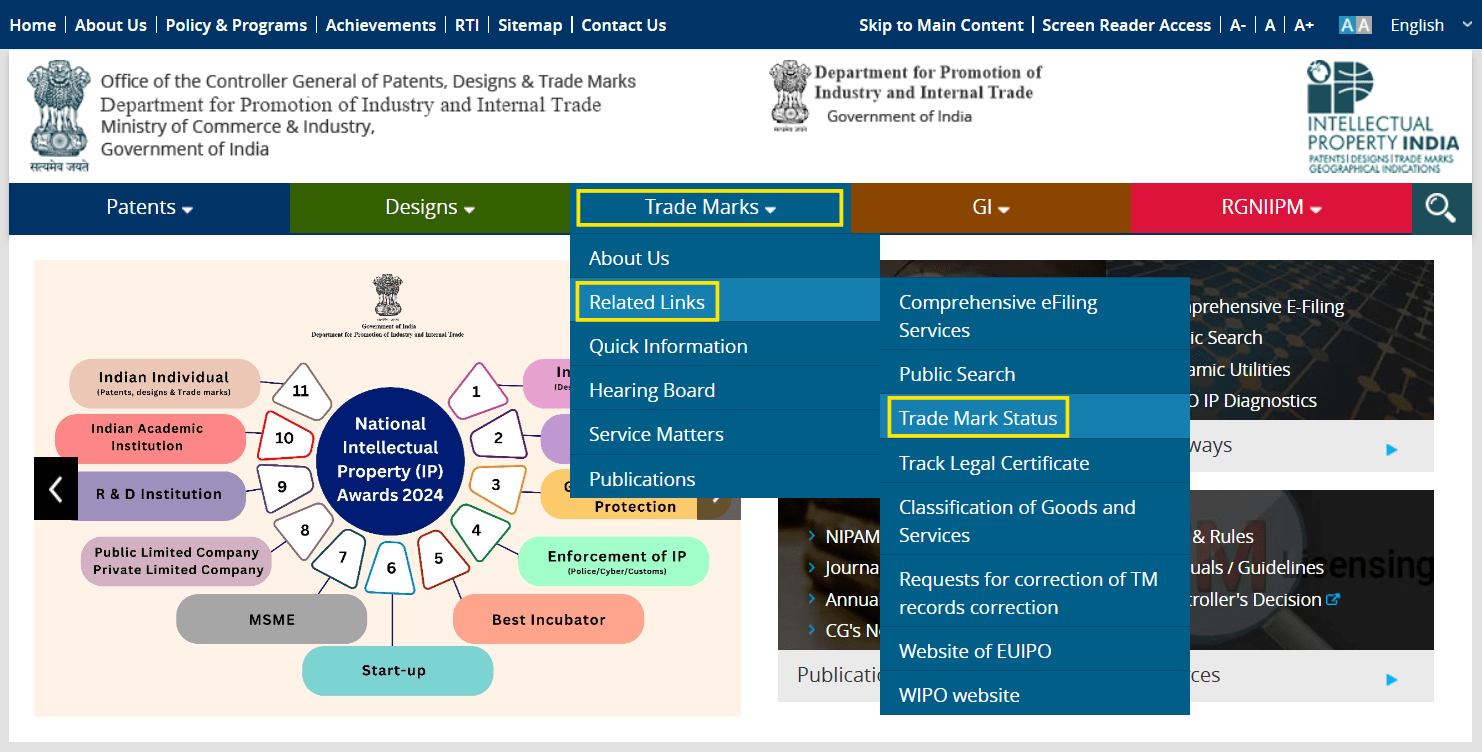
3. The below “ E-Register” Page shall be displayed on the screen. Then, On the left side of the page, select the option labeled ‘ Trade Mark Application/Registered Mark.”
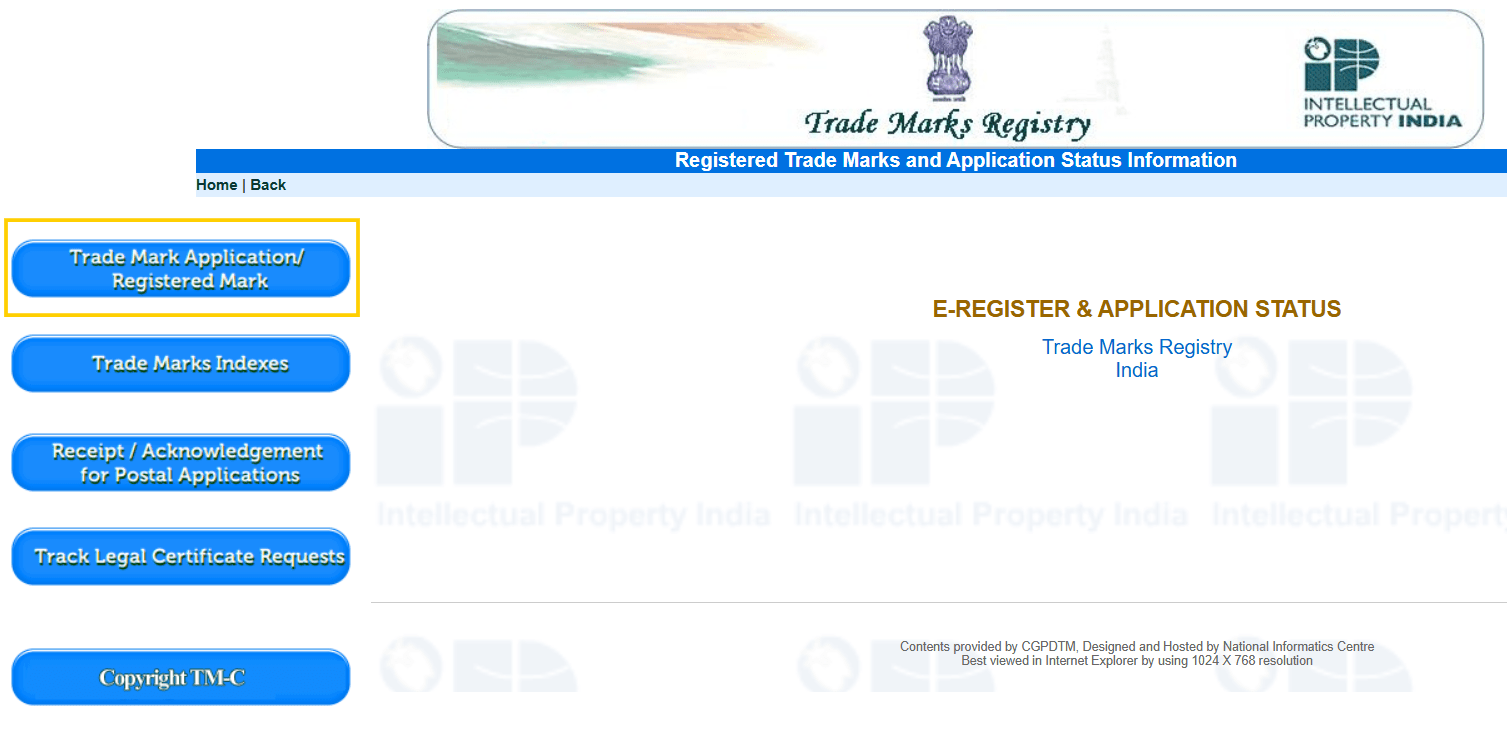
4. After clicking the trademark application/ registered mark, two options will appear. Click on the ” National IRDI Number ” to proceed.
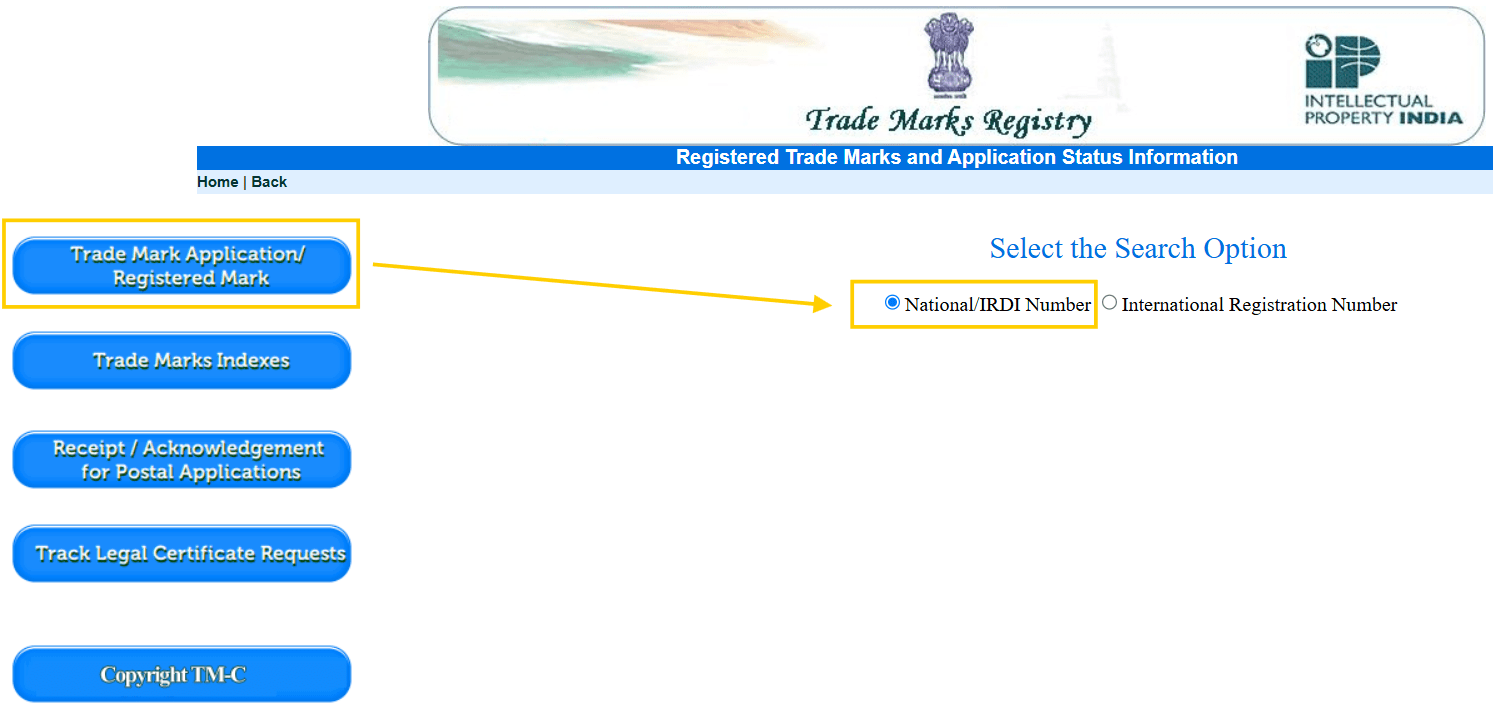
5. Next, enter the Trademark Application number and input the captcha code accurately. Once you have filled in the details, click on ‘View’ to proceed.
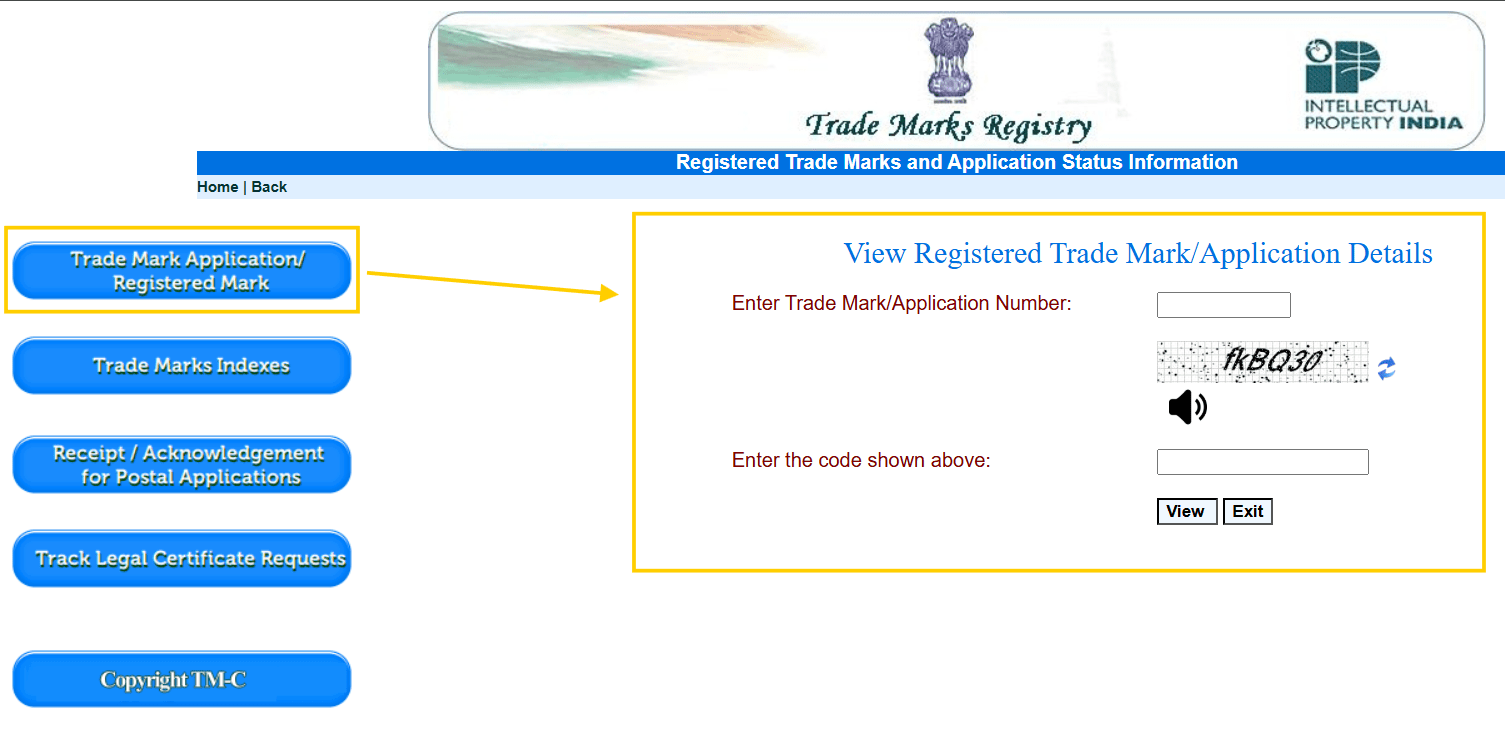
6. Once you click the ‘View’ button, the website will display your ” Trademark Application Status.”
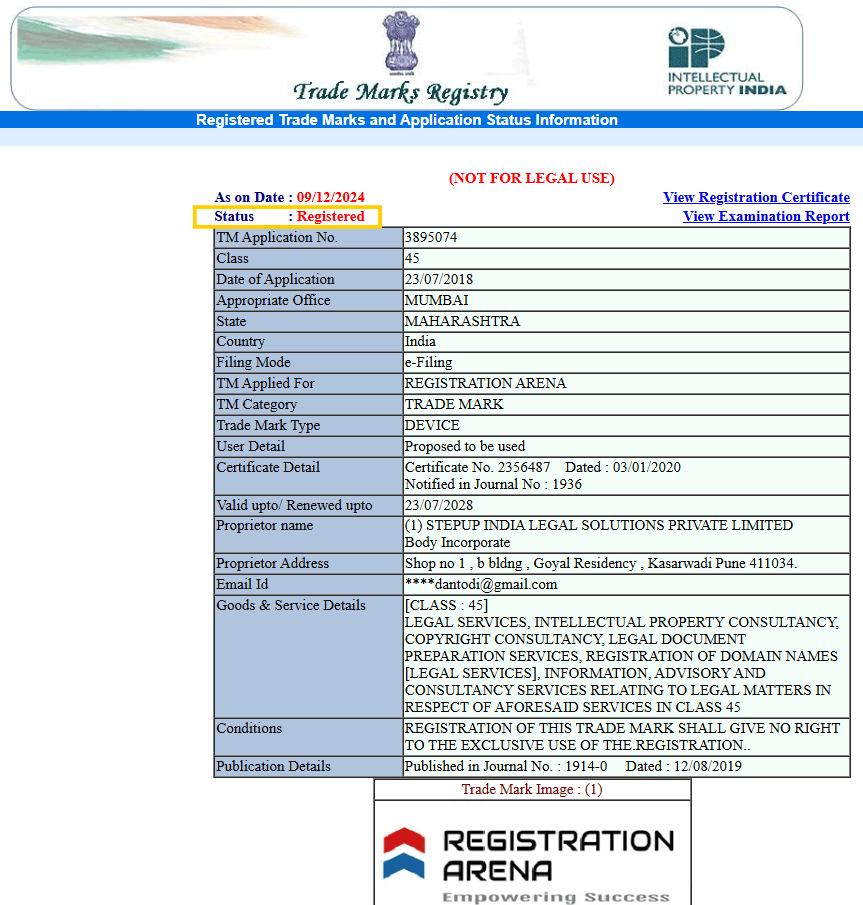
Types of Trademark Application Status
After entering your application number, the system will provide you with your current trademark application status. The status of a trademark changes as the application progresses through various stages. Here are the different types of trademark application status explained:
1. New Application
The New Application status is assigned to trademark applications that have just been added to the trademark Registrar database. This signifies the initial step in the application process. At this stage, the application has been received and is awaiting detailed scrutiny before further examination.

2. Send to Vienna Codification
The Vienna Code Classification is an international system for categorizing the figurative elements of trademarks. This status is assigned to non-text trademarks, such as logos, labels, or artwork. Each application receives a numerical code based on the Vienna Codification. While the application is classified at this stage, it still has a long way to go before it can be registered.
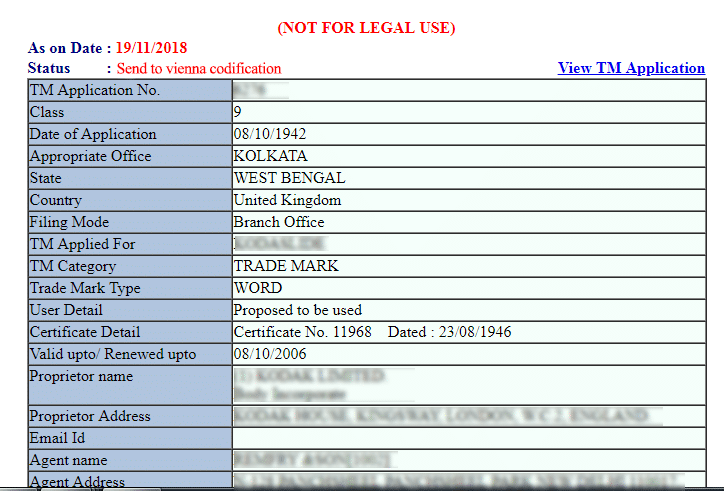
3. Formalities Check Pass
When the trademark application reaches the “Formalities Check Pass” stage, it indicates that all procedural requirements have been fulfilled. This status is granted when the documentation complies with the Trademark Registrar guidelines, confirming that all initial documents submitted with the application have been accepted. In other words, there are no issues with the submitted documents at this point.
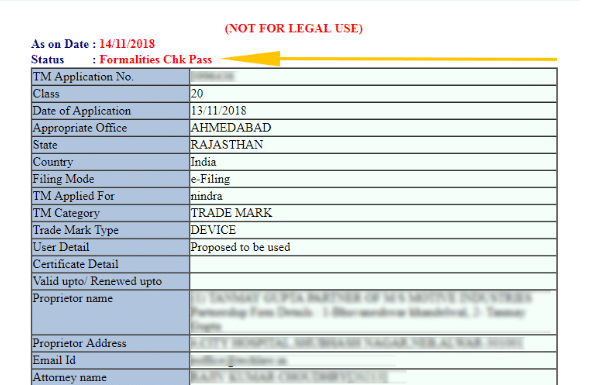
4. Formalities Check Fail
If the Trademark Registrar identifies any issues or discrepancies with the initially submitted documents, the application status will be marked as “Formalities Check Fail.” This may occur due to insufficient or unclear documentation. If any procedural formalities are incomplete or not satisfactorily met, the status will reflect “Formalities Check Fail” instead of “Formalities Check Pass.” In such cases, the Registrar will request the applicant to address the issues and submit the necessary documents. The applicant must then ensure compliance within the specified deadlines.
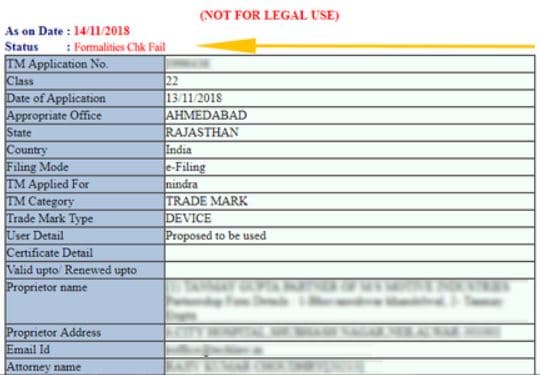
5. Marked for Exam
This stage marks when the application is forwarded to the examiner to begin the examination process. The examiner evaluates whether the application meets the requirements for registration according to the Trademark Act. Once the application reaches the examiner, its status changes to “Marked for Exam.”
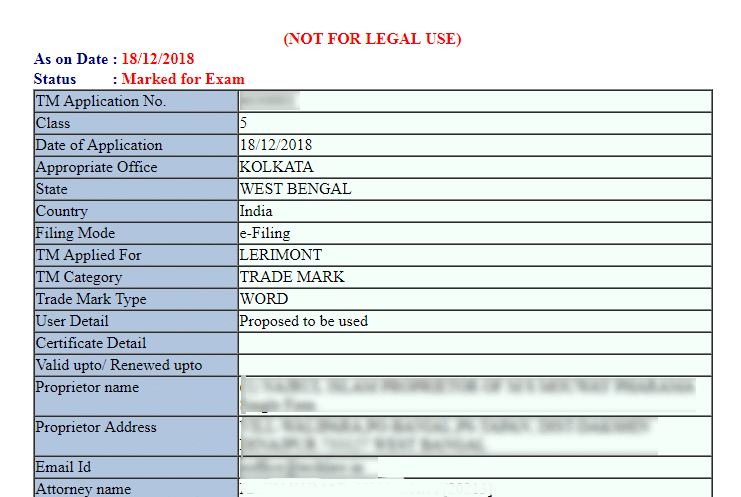
6. Objected
The examiner may raise objections regarding the trademark application, at which point the application status changes to “Objected.” The applicant will receive an official notice via postal and electronic methods and is required to respond to the Trademark Examination report within one month of the notice’s issuance. This status indicates that the examiner has raised specific concerns about the trademark and its registration.

7. Abandoned
If the applicant fails to address the objection notice within the specified timeframe, the trademark application will be considered abandoned and assigned the status of “Abandoned.”
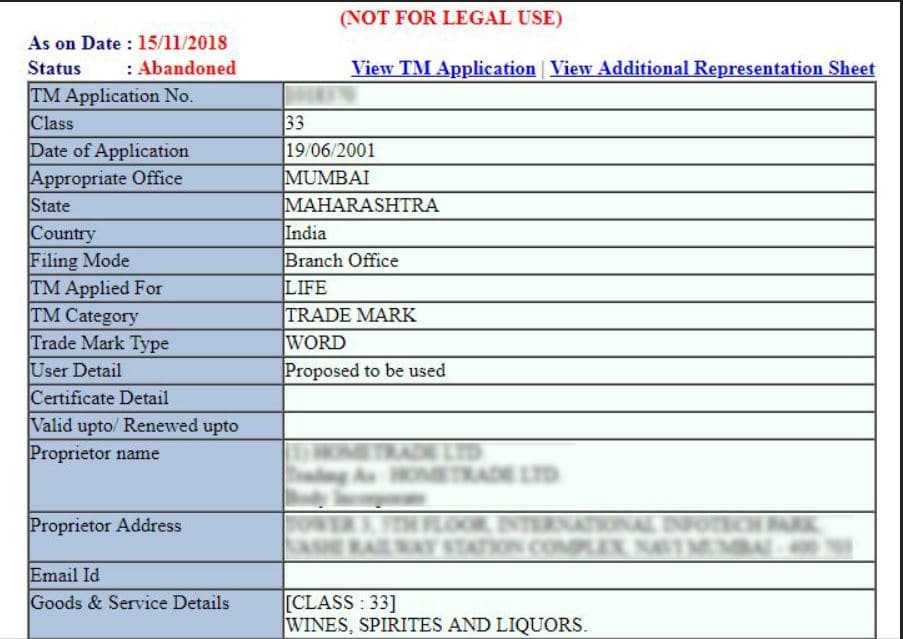
8. Accepted
If your trademark application has passed this stage without any objections, the status will change to “Accepted.” This status signifies that the Registrar found no issues and your trademark is ready for publication in the Trademark Journal.
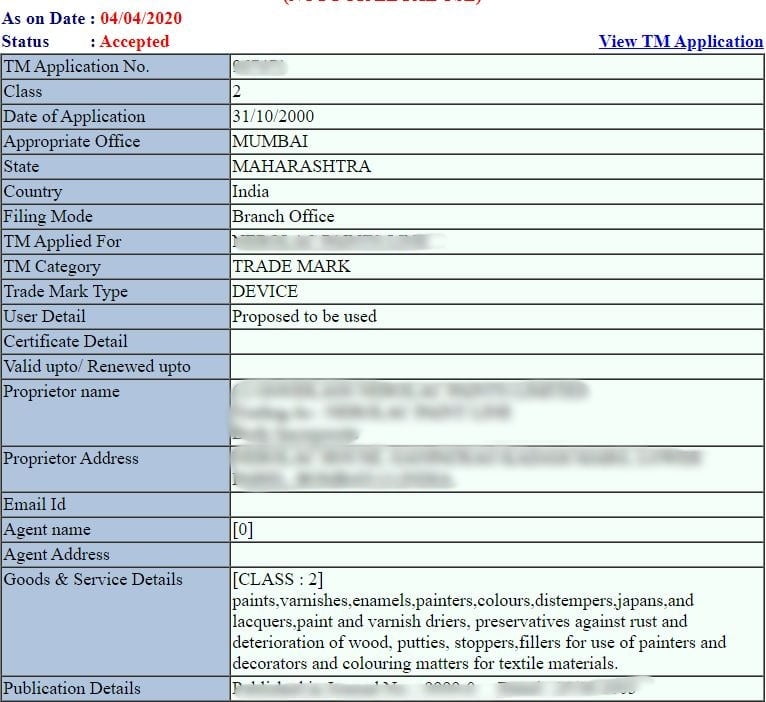
9. Advertised Before Accepted
There are instances where the trademark status is labeled “Advertised before Accepted” This indicates that the Trademark Registrar has not yet reached a conclusion regarding the suitability of that particular trademark for acceptance. This status is also assigned when the application is published in the Trademark Journal by the Registrar prior to its acceptance. It is displayed on the Trademark Registrar website. This stage provides an opportunity for third parties to file an opposition if they believe there may be a risk of infringement before the trademark is accepted. If no opposition is received, the Registrar will proceed to accept the trademark.
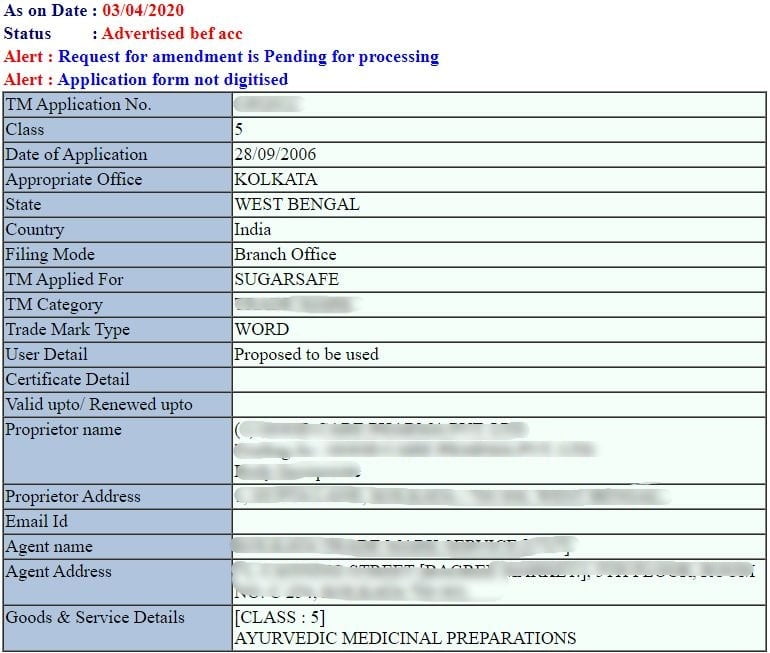
10. Accepted and Advertised
This stage is good news for the applicant since here, the mark is advertised in the trademark journal. At this stage, the applicant has to make no required changes. The trademark is given the status of “Accepted and Advertised” and it will open for the public to raise opposition if any for the respective trademark.

11. Ready for Show Cause Hearing
The status is marked as “Ready for Show Cause Hearing” when the examiner is not satisfied with the arguments provided in the response to the Trademark Objection or Examination Report. The examiner offers the applicant a chance to attend a hearing to explain the significance of the mark. The applicant must respond to this hearing within the specified deadline; failing to do so will result in the application being abandoned. It’s crucial for the applicant to regularly check the status of their application.
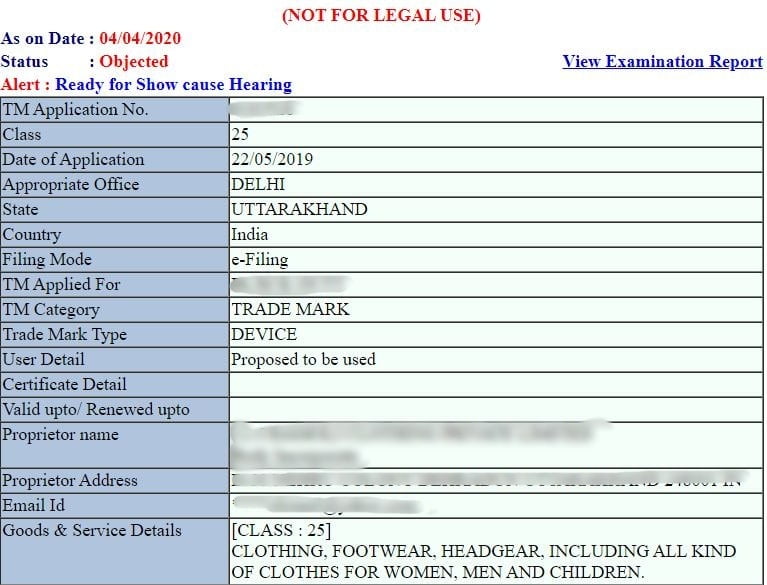
12. Refused
If the Trademark Registrar is not satisfied even after listening to the arguments of the applicant, the status of such an application on the Trademark Registrar website will be changed to “Refused”.
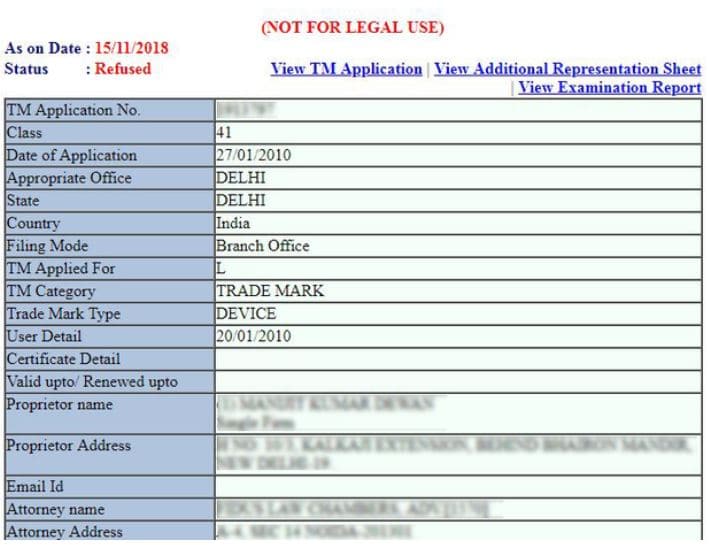
13. Opposed
Following the stage of trademark publication, a three-month window is given during which third parties have the opportunity to raise opposition against your trademark. If such an opposition is filed, the status will be altered to “Opposed” and you will receive a legal notice. As the applicant, it is your responsibility to respond to the opposition and provide a defense for your trademark.
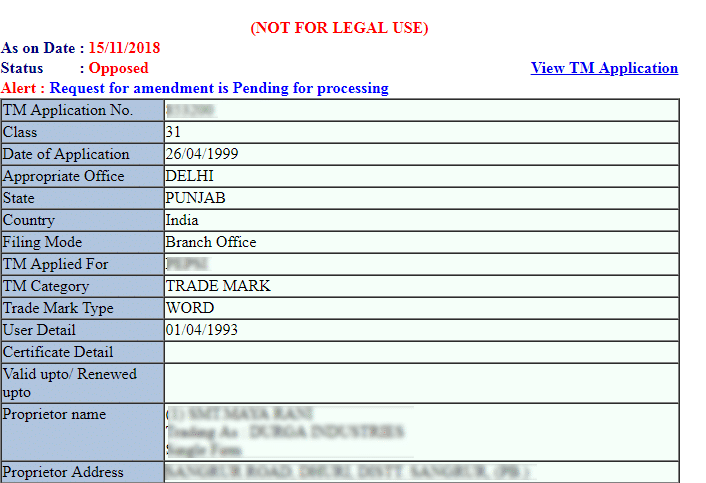
14. Registered
If no opposition is raised within the three-month period following the publication of your trademark in the Journal, the Registrar will approve your trademark, and the status will be updated to “Registered” This signifies that your trademark has successfully completed the registration process and is now legally protected in India.
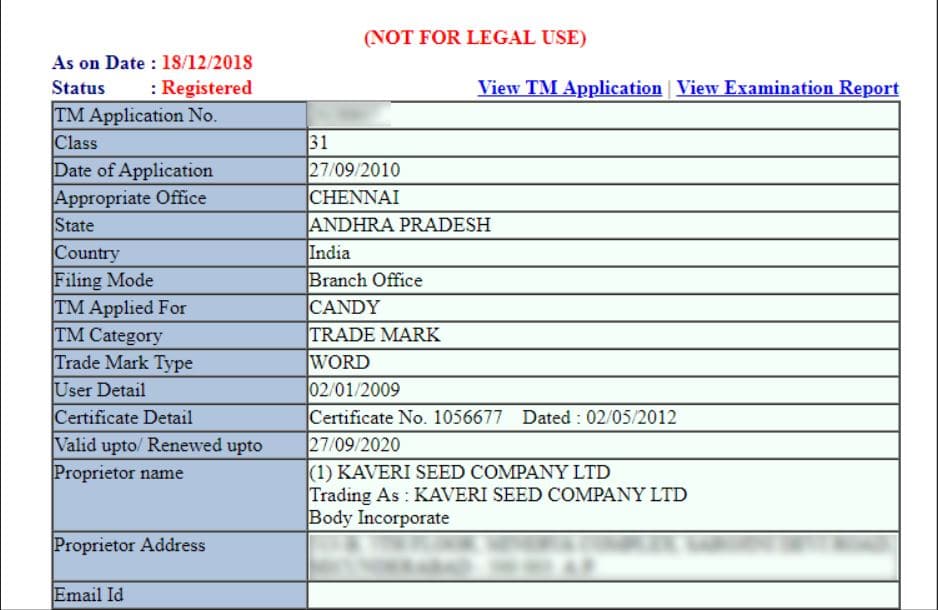
15. Removed
Status of “Removed” is given to those trademarks which are removed from the register of the Registrar of Trademarks. The reason behind doing so is the non-renewal of the registered trademarks.
16. Withdrawn
If the applicant voluntarily withdraws the application for a trademark from the register of the Trademarks registrar, then the status of the application will be “Withdrawn”.
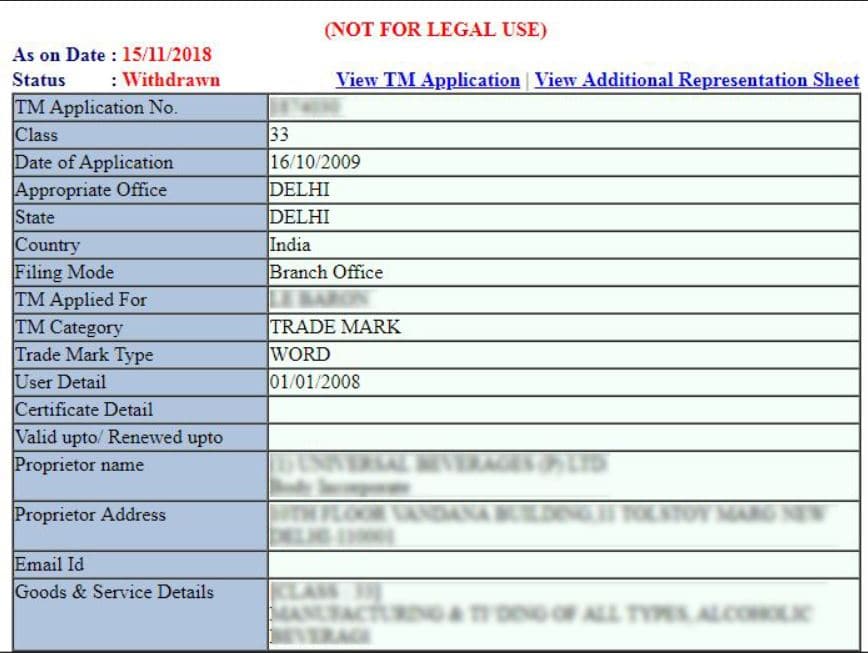
Process for registering Trademark in India
Initial Trademark Search
Before starting with the registration process, a detailed Trademark Search is required to be conducted to ensure that the proposed trademark is unique and does not conflict with existing trademarks. Search can be carried out online through the official website of the Trademarks Registry.
Prepare and Draft the Trademark Application
For preparing and drafting the trademark application form (TM-A), the following information and documents are required to be collated:
- A clear representation of the trademark
- Details of the applicant, including name, address, and nationality
- Description of goods or services associated with the trademark
- Date of first use (if applicable)
- Power of Attorney (if filed through an attorney)
- Digital Signature of the Applicant
The application can be filed online through the official website or a physical application can be submitted at the nearest Trademarks Registry office.
Submit the Application
The trademark application can be submitted online or offline by paying the requisite fees. The fee varies depending on whether you’re an individual, a startup, a small enterprise, or a large corporation.
Examination by the Trademarks Registry
The Trademarks Registry will review the application to ensure it complies with the relevant laws and regulations. They will assess the distinctiveness of the mark, potential conflicts, and other requirements.
Publication in the Trademarks Journal
If the Registrar finds no objections or issues with your application, your trademark will be published in the Trademarks Journal. This publication allows interested parties to oppose the registration within a specific period (usually four months).
Objection and Opposition Period
During the publication period, objections or oppositions can be filed by third parties against the proposed trademark. If an objection is filed, the opportunity to respond shall be granted.
Registration Certificate
If there are no valid objections or if you successfully resolve any objections, the Registrar will issue a Certificate of Registration for trademark. This certificate confirms your exclusive rights to the mark.
Conclusion on Trademark Application Status
A Trademark is a recognizable, word, sign, phrase, or symbol that denotes a specific product and legally differentiates that product from the rest of the similar products in the market. The process through which a trademark is recorded in the Register of Trademarks is referred to as registration. Once the application for trademark registration is submitted, keeping track of the trademark applications status is essential for the applicants.
Each status reveals important information about the application’s progress and any actions needed. By regularly checking the Trademark Registrar’s website, applicants can respond quickly to any issues, improving their chances of successful registration. Staying informed helps ensure a smooth trademark registration process.
Are you looking for trademark registration? At Registration Arena, our expert team is here to guide you through the process. Contact us today to start the Trademark Registration process in India smoothly and efficiently.
